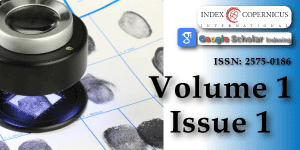WMW: A Secure, Web based Middleware for C4I Interoperable Applications
Main Article Content
Abstract
Modern-day enhancements in Enterprise Architectures (EA) has increased the interoperability issues in almost all domains; these issues are increasing day-by-day as organizations are spanning and information is being exchanged between different platforms. Command Control Computer Communication and Intelligence (C4I) complex systems are also facing the interoperability issues due to highly classified and sensitive information being exchanged. In this paper we have discussed the integration of different C4I applications running under heterogeneous platforms by allowing them to communicate using a secure and ciphered web based middleware named as Web Middleware (WMW). This middleware is a client-server based web adaptor to achieve clean, systematic, secure and reliable communication. The main feature among many is the simple HTTP browser based customization that do not require any specific or special add-ons and controls to be installed on the client machine. Architecture usage, and initialization of the WMW middleware is discussed with security and performance discussion.
Article Details
Copyright (c) 2017 Zeeshan N

This work is licensed under a Creative Commons Attribution 4.0 International License.
Alghamdi A, Siddiqui Z, Syed Quadri SA. A Common Information Exchange Model for Multiple C4I Architectures. Computer Modeling & Simulation (UKSIM). 2010; 538-542. Ref.: https://goo.gl/o4Niql
Ghamdi A, Siddiqui Z. Common interoperability Framework for defense Architectures, A web Semantic Approach. 16th Internationa Conference on Distributed Multimedia Systems. 2010; 14-16. Ref.: https://goo.gl/IpDqt1
Siddiqui Z, Abdullah A, Khan MK, Alghathbar K. Analysis of Enterprise Service Buses on Information Security, Interoperability and High-availability using Analytical Hierarchy Process (AHP) method. Physical Sciences. 2011; 6: 35-42. Ref.: https://goo.gl/MncrrU
Siddiqui Z, Abdullah AH, Khan MK. Qualified Analysis b/w ESB(s) using Analytical Hierarchy Process (AHP) Method. International Conference on Intelligent Systems, Modelling and Simulation. 2011; 100-104. Ref.: https://goo.gl/F9M44P
Siddiqui Z, Abdullah A, Khan MK, Ghamdi A. Node Level Information Security in Common Information Exchange Model (CIEM). College of Computer and Information Sciences. 2010; 21: 221-230. Ref.: https://goo.gl/rlZPma
Patrick E. Information breifing to M&S CoC. Simulation-C4I Interoperability (SIMCI); Overarching IPT (OIPT). 2008.
Tolk A. Beyond Technical Interoperability-Introducing a Reference Model for Measures of Merit for Coalition Interoperability. CCRTS. 2003; 47. Ref.: https://goo.gl/jIWlZS
Dickerson CE. A Relational Oriented Approach to System of Systems Assessment of Alternatives for Data Link Interoperability. Systems Journal IEEE. 2013; 7: 549-560. Ref.: https://goo.gl/kCegpM
Zenel B, Duchamp D. A general purpose proxy filtering mechanism applied to the mobile environment. ACM/IEEE. 1997; 248-259. Ref. https://goo.gl/D26blq
Wetherall DJ, Guttag JV, Tennenhouse DL. ANTS: A Toolkit for building and dynamically deploying network protocols. IEEE OPENARCH. 1998. Ref.: https://goo.gl/F3SnOJ
Kunz T, Black JP. An architecture for adaptive mobile applications. 11th International Conference on Wireless Communications. 1999; 27-38. Ref.: https://goo.gl/S4PJQD
Liljiberg M, Alanko T, Kojo M, Laamanen H, Raatikainen K. Optimizing World-Wide-Web for Weakly connected mobile workstations: An Indirect Approach. 2nd International Workshop on Services in Distributed and Networked Environments. 1999; 32-139. Ref.: https://goo.gl/j9vp8M
Buyukkokten O, Molina HG, Paepcka A, Winograd T. Power Browser: Efficient Web Browsing for PDA’s. Proceedings of the SIGCHI conference on Human Factors in Computing Systems. 2000; 430-437. Ref.: https://goo.gl/Sd1rH8
Noble B. System support for mobile, adaptive applications. IEEE Personal Commu. 2000; 7: 44-49. Ref.: https://goo.gl/cbJDVR
Villate Y, Gil D, Goni A, Illaramendi A. Mobile Agents for providing mobile computers with data services. DSOM 98. 1999; 1-12. Ref.: https://goo.gl/hQj4Yu
Siddiqui Z, Abdullah AH, Khan MK, Alghamdi AS. Smart Environment as a Service: Three Factor Cloud based User Authentication for Telecare Medical Information System. Journal of Medical Systems. 2014; 38: 9997. Ref.: https://goo.gl/Klshmp
Siddiqui Z, Abdullah AH, Khan MK, Alghamdi AS. Cryptanalysis and improvement of ‘a secure authentication scheme for telecare medical information system’ with nonce verification. Peer-to-Peer Networking and Application. 2016; 9: 841-853. Ref.: https://goo.gl/XlV89E
Siddiqui Z, Alghamdi AS. SOA Based C4I Common-View Interoperability Model. Science International, Lahore. 2016; 26: 175-180. Ref.: https://goo.gl/VNW2Sj
Siddiqui Z, Alghamdi AS. A Universal View SOA Interoperability Framework for Multiple C4I Applications. Science International, Lahore. 2016; 26: 97-100. Ref.: https://goo.gl/QLF5aC

